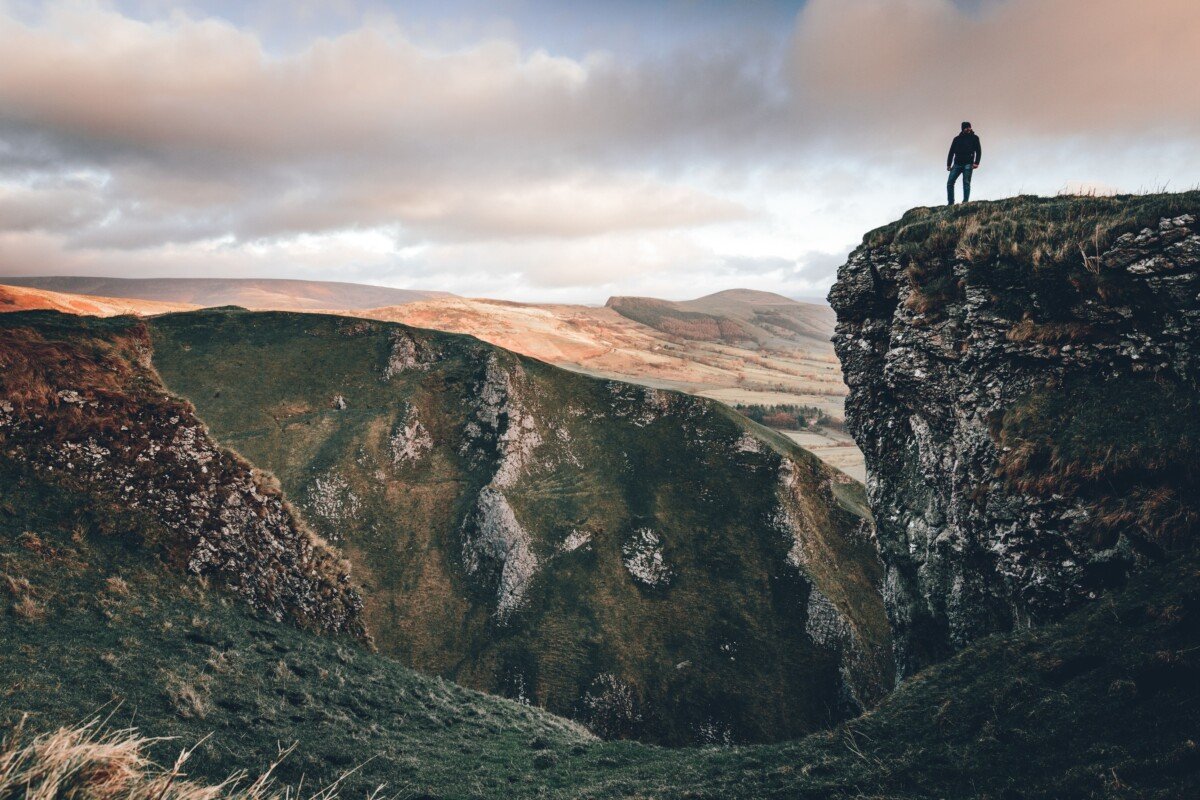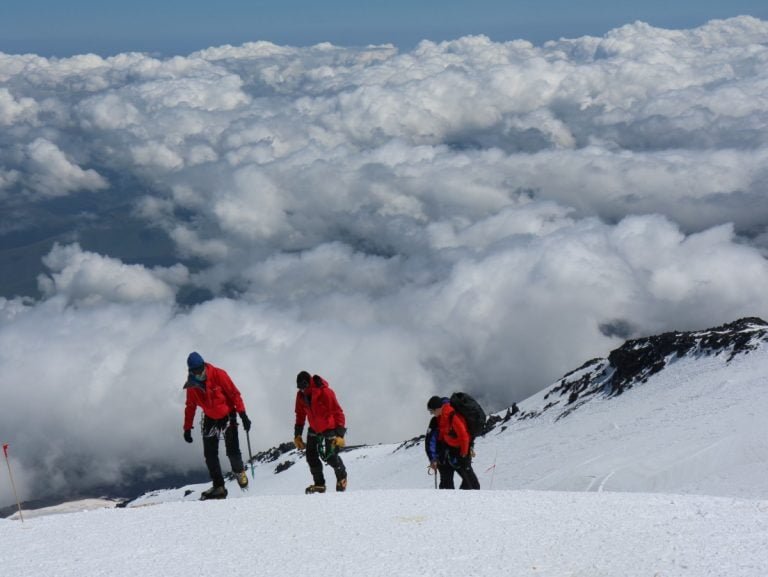Want to develop better perseverance? Climb this hill
Reaching the top of any hill can be one of the most exhilarating things in life. But every step you take towards the summit of any peak can be full of big surprises. Giant rocks to clamber over, thick gloopy mud to wade through and flying platoons of biting insects emerging from the prickly undergrowth!
If you then look upwards and sense the remote possibility of precipitation from the clouds slowly gathering overhead, after just a few hundred yards the very thought of the whole thing can make you want to perform a swift u-turn and take refuge in the nearest cosy café instead!
Just like hills, our careers and studies can also present challenges that give us that sudden feeling of ‘Why did I ever start this ’, or ‘I can’t face having to go through this ’ or ‘I’m never going to get this finished with all of that in the way ’. However, adopting that mindset can prevent you from achieving what you’re really capable of. Plus it means that you miss out on the breathtaking views, new learning experiences and sense of achievement that you would otherwise obtain by sticking with it.
So what can we learn from hill walking that can help us to develop stronger perseverance in our everyday lives? Here are some tips on how you can stick with it all the way to the top.
1. Prepare and commit to it
To achieve anything in life, be it getting to the top of a hill, or securing the job that you want, you first have to commit to it.
The hard truth of the matter is that if you say you want to climb a big hill the night before, only to turn up the next day and walk away from it moments after you get there, it usually demonstrates that you were never really committed to it in first place – or that you weren’t really prepared for the journey ahead.
Our careers and our education are things that we have to continuously commit to over many years of our lives. They are essential to human growth, happiness and longevity, because they help us to continue learning , develop healthy & useful relationships with others and feel a continuing sense of achievement and wellbeing.
Knowing what you want to achieve out of your career, your studies and your life can provide the desire that helps to propel you into action and start climbing the hill. But you need to commit to that action first if you want to achieve anything.
2. Minimising the insect bites
After the excitement of starting anything new, things can inevitably start to get tough. When the heather is in its most vibrant purple flower on the hillside, swarms of heather flies can make walking tricky going for even the hardiest of hikers. For the first time walker, it can feel like you’re walking through a never ending black biting blizzard!
Similarly, during any career or course of studies, there will always be difficult times when you have to deal with new things that feel a little bit scary, particularly if you sense that you might experience some pain by tackling them.
Working through difficult things is unavoidable and all part of life – but often the best course of action is being as prepared as you can be (sensible clothing and insect repellant for hill walking and exercise, good nutrition and sleep to get through a challenging day at work) and then putting your best foot forward and getting through the unavoidable as quickly and effectively as possible.
Insect bites are an inevitable part of being in the countryside, but as with tackling difficult parts of our careers and studies, you can reduce how much you are bitten or affected by taking a sensible and pragmatic approach to working through those unavoidable obstacles.
3. Don’t get stuck in the mud!
On any hill walk, once you’ve walked through the odd swarm of winged creepy crawlies, water, puddles and mud are often not far ahead.
In any job or career, getting through a challenge in one piece can provide a sense of satisfaction, but if that is quickly followed by having to navigate another tricky piece of work or another dilemma, the very sight of that new obstacle might make you feel very tired quite quickly.
In allowing that sense of tiredness (or perhaps more accurately, the perceived sense of tiredness that having to navigate that obstacle might bring) to wear you down, there is a risk that you fail to work through that challenge constructively and get stuck in ‘the mud’ instead, unable to move forwards in a positive way.
However, it is worth recognising that most puddles can be stepped over, or by walking around the edge of them you can at least avoid treading in the thickest of mud! It just takes a second to observe where you’re going and you can safely navigate the path ahead. Similarly, by maintaining focus on the overall task at hand or your career as a whole, it will help you to avoid getting stuck in a seemingly difficult task and any sinking feeling that might accompany that.
4. Approach the rocks with caution but don’t be afraid!
So, you have managed to avoid the worst of the insects and mud, but before you reach the top of your hill walk, there’s just one obstacle left – the winding path of the hill gradually runs out and you need to navigate yourself up and over fifty metres of rocks to reach the top.
In our work and studies, just as with hill walking, our steepest and most difficult challenges are often those which appear just as we think we have done everything needed to complete a task. A last minute hitch can leave us up against the clock to meet a deadline, or a change in customer demands can mean additional unanticipated workloads. However, it is worth bearing in mind that your steepest challenges are often the least avoidable too.
Even with the best planning in the world, nature can shift rocks to make them harder to climb and things outside of your control can make the task at hand seemingly impossible. So you always need to be mentally and physically prepared for the unexpected.
When faced with your most difficult challenges, it can be tempting to try to overcome them by using all of your remaining energies in one go. However, the risk of doing so is that it if you fail to get over the line at your first attempt, you may have nothing left in reserve to have another go if you need to.
After months on a work project or years of studies, sometimes all you really need is to do is look back and see how far you have come on your journey and then stop, re-assess and visualise your final steps in perspective, knowing that the distance to the finishing line is minuscule in comparison to the journey you have been on. In doing so, it enables you to take the final steps to the summit, safely, calmly and with minimum effort.
The journey back down prepares us for the next hill
Reaching the top of any hill and admiring the beautiful scenery from the summit is one of the most satisfying of all human endeavours and makes any uncomfortable moments along the way more than worthwhile.
After admiring the views, we eventually have to navigate ourselves back down the hill again so that we can begin our next studies, next work task or next career goal. How you choose to descend your hill and what you observe and learn from your hill climbing experiences overall will have a direct impact on how successful your next challenge is.
Rushing back down to earth can be fast, exciting and exhilarating, but in doing so, you might miss out on truly reflecting on what obstacles you overcame on the way up. But if you spend a little time learning from your experiences on your descent, not only will it help to preserve some wonderful memories, it will also make you more ready and prepared to face your next challenge and provide you with the perseverance you need to make it another success.








